Don't wanna be here? Send us removal request.
Photo



Some moments of joy and beauty from No Sesso's Fall Winter 2020 presentation, "A Vignette of the Renaissance on 24th Street," which took over WAREHOUSE at the Geffen last Saturday. The collection, designed by Pierre Davis and Autumn Randolph, featured up-cycled pieces from Davis' and Randolph's closets, original drawings from Sensational Bobbi, and was set to a soundtrack from Alima Lee and Algorythm. Over 400 people were in attendance, filling WAREHOUSE to witness this mix of traditional runway show with performance art. Davis, Randolph and co-founder Arin Hayes dedicated the show to their community in Los Angeles who have always shown up for them and MOCA is honored to have been part of their history! Image credit, Adam Davis via BFA.
#no sesso#los angeles#fashion#bfa#fashion show#nyfw2020#fw2020#pierre davis#moca#museum of contemporary art#performance art
46 notes
·
View notes
Photo
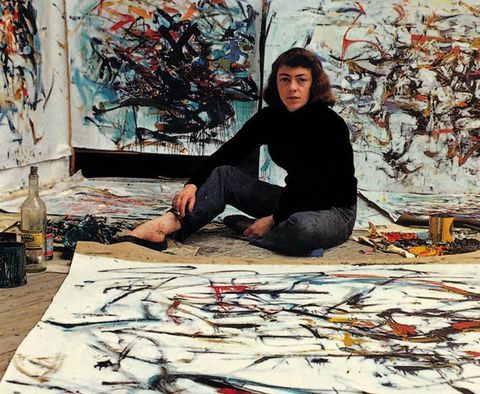
“My paintings repeat a feeling about Lake Michigan, or water, or fields. It’s more like a poem...and that’s what I want to paint.” Today MOCA remembers the great abstract expressionist and feminist painter Joan Mitchell, who was born on this day in 1925. Mitchell deeply associated her paintings with poetry, using poems as inspiration prior to painting, and one can identify the poetic forms of her wild yet controlled artwork. Over 20 years later after her untimely passing (due to lung cancer), Joan Mitchell’s work is as acclaimed and respected as ever. Last year, David Zwirner gallery in New York, who represents Mitchell, showed Joan Mitchell: I carry my landscapes around with me, the first exhibition to focus on the artist’s multi-paneled paintings. Image and quotes via CR Fashion Book
#joan mitchell#abstract expressionism#feminist painting#david zwirner#cr fashion book#moca los angeles#contemporary art
105 notes
·
View notes
Photo
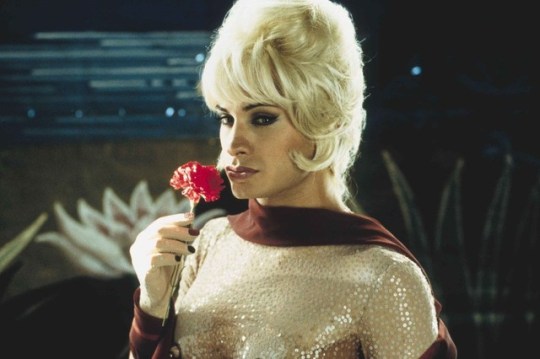
Pedro Almodóvar: “I rely on it, it’s an addiction, the need to tell stories. If anything, my relationship with film has become more tense, more of a problem, because there is always that question: when will my time be up? Will this be the last film I make?” Feliz cumpleaños Pedro :')
45 notes
·
View notes
Text
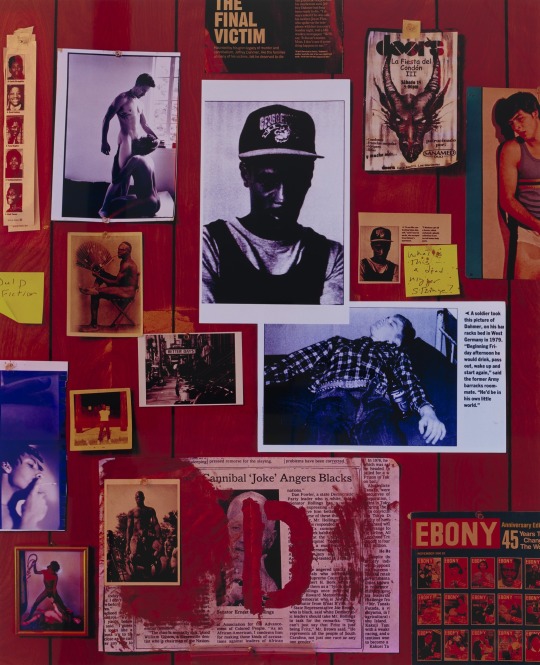
Lyle Ashton Harris: “[The Watering Hole] was less about [Jeffrey] Dahmer per se, but the notion of Dahmer wrath... [I] was looking at the way in which, you know, black culture gets consumed to—whether that's, let's say, Mapplethorpe, or Dahmer, or Dana Schutz, for that matter. The way in which the claiming or tapping into that currency and using the currency as a way to somehow speak without really thinking of the larger—I wanted to somehow pull back and to somehow to look at, you know, the architect of whiteness, you know, in the public imagination, and to give it a name or face, if you will, to that level of consumption.”
[Lyle Ashton Harris, The Watering Hole II, 1996, Duraflex print, 40 x 30 in. (101.6 x 76.2 cm) Frame: 36 7/8 x 30 1/4 x 2 in. (93.66 x 76.84 x 5.08 cm)]
80 notes
·
View notes
Photo

Jun Nguyen-Hatsushiba: “I think I feel a spiritual connection to many things beyond my work. During the filming of Memorial Project Nha Trang, Vietnam, I remember getting goose bumps looking down at the bottom of the ocean where we had placed the mosquito nets. I interpret goose bumps as an interaction with the supernatural.”
[Still from Memorial Jun Nguyen-Hatsushiba’s Project Nha Trang, Vietnam, 2001]
67 notes
·
View notes
Photo

The collapse of the stellar universe will occur – like creation – in grandiose splendor.
[Still from Werner Herzog’s Lessons of Darkness, 1995]
146 notes
·
View notes
Photo

“A new iconography of wretchedness is produced in times of famine, and yet language essentially fails in grasping this ultimate fall into desperation. (There is a close association between humanity’s affective capacities and the experience of endemic hunger: this is little surveyed in reflective studies of famine’s legacy.) Across modern history, artists have taken up the representational challenge and been the foremost chroniclers of these man-made calamities.”
–Natasha Ginwala, So Many Hungers (bit.ly/2RaKsMk)
[Sunil Janah, orphans waiting for food at a famine-relief center during the famine in Orissa, 1944]
72 notes
·
View notes
Photo
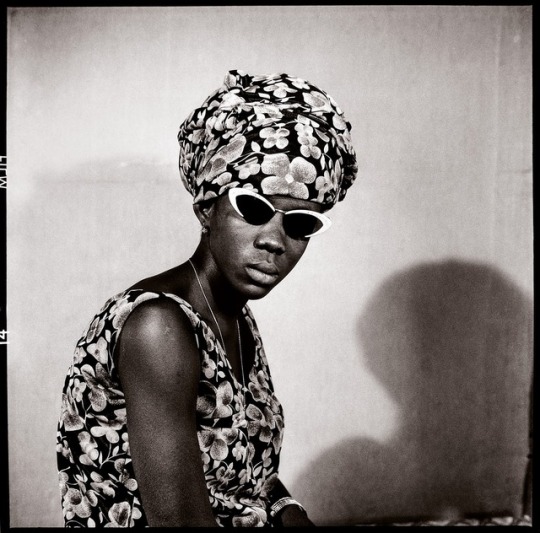
Malick Sidibé: “I believe with my heart and soul in the power of the image.” [Malick Sidibé, Mademoiselle Kadiatou Touré avec mes Verres Fumés, 1969 © Malick Sidibé/Galerie Magnin-A, Paris]
477 notes
·
View notes
Photo
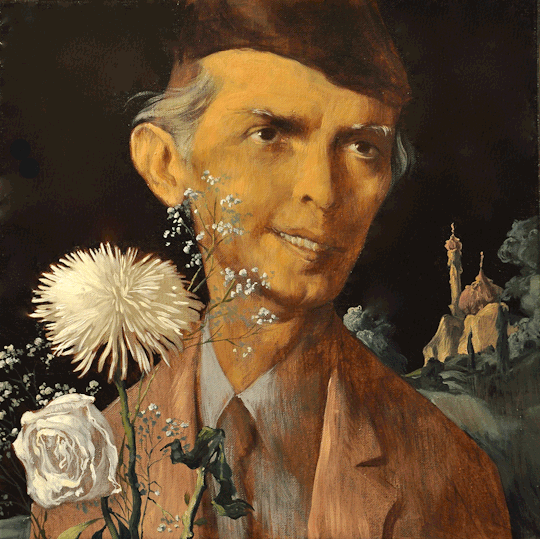
Salman Toor: “There are several narratives [in my work]:
a) the idiosyncrasy of being from a Post-Colonial culture, having the added baggage of being from a culture that is perceived to be in a state of decay or turmoil, the baggage and profound understanding that comes from imagining myself as a kind of representative of that part of the world and mingling the best of what’s happening in Bushwick with that of Lahore and Karachi. b) making fun of the wish to be a painter (in the European sense) from South Asia. Toying with the idea, the need to be progressive, the need for beauty/ aesthetic.c) the boredom and excitement of being an artist, and working in Bushwick and living in the East Village.”
[Salman Toor, Jinnah with Flowers, Oil on Canvas]
33 notes
·
View notes
Photo

Souleymane Cissé: “The world goes so fast that we can’t comprehend it, but if one day we manage to slow down, we will see that it is unique. Why not create in this humankind in this world of diversity which allows us to keep our richness? These have been my words from the beginning because I believe in the universality of human being, our nature, our life. Filmmaking is universal and can show the way.” [Still from Souleymane Cissé's Yeelen, 1987]
319 notes
·
View notes
Photo
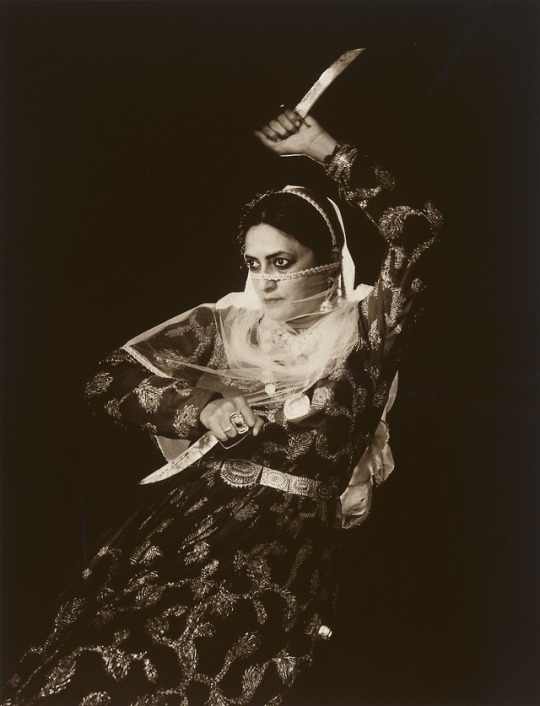
Pushpamala N.: “Earlier, I believed that India was a poor rural country and so artists should use poor or humble materials to talk about our reality. But in fact here I am, a very metropolitan person who is a citizen of one of the highly industrialised countries of the world with a long history of modern technology. We are falling into an Orientalist stereotype if we seek reality only in the pre-industrial.” [Pushpamala N., The Navarasa Suite from the series Bombay Photo Studio, 2003, Gelatin silver print, 25 7/8 × 19 15/16" (65.7 × 50.6 cm)]
215 notes
·
View notes
Photo
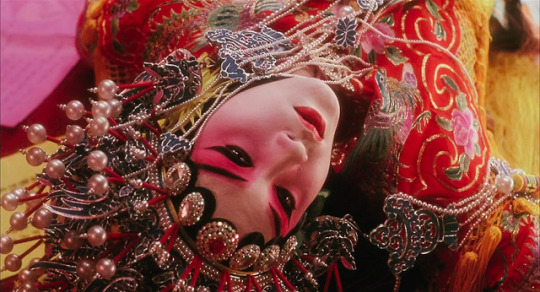
Chen Kaige: “My father told me that there are two kinds of tragedies. One is the tragedy of fate and the other is the tragedy of the personality. The tragedy of the personality is more sublime.” [Still from Chen Kaige’s Farewell My Concubine, 1993]
183 notes
·
View notes
Photo
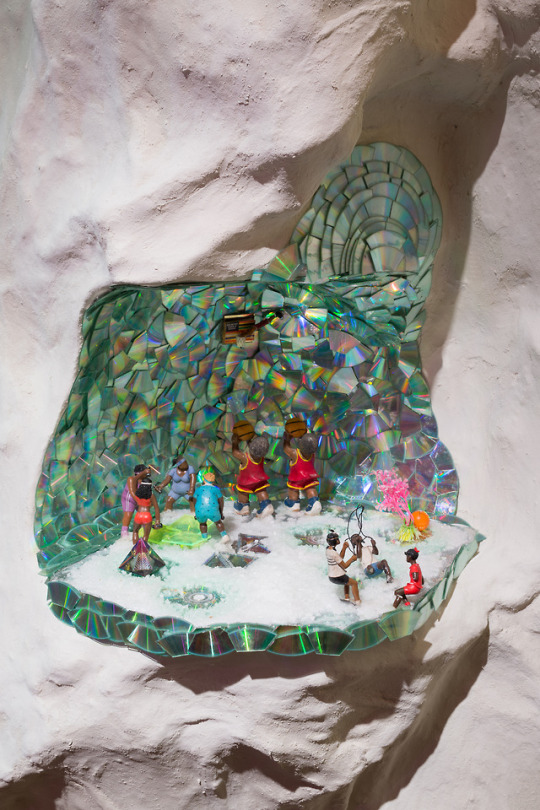
Lauren Halsey: “With all of the odds already stacked against working class black and brown folks in low income neighborhoods in LA (food, education, police, housing, etc), I can’t imagine not having a community-based practice. My interest is to not only affirm folks through my practice/the artwork but most importantly to do so with tangible results: paid jobs, transcendent programming, free resources and workshops.” [Installation view of Lauren Halsey: we still here, there, March 4–September 3, 2018 at MOCA Grand Avenue, courtesy of The Museum of Contemporary Art, Los Angeles, photo by Zak Kelley]
168 notes
·
View notes
Photo
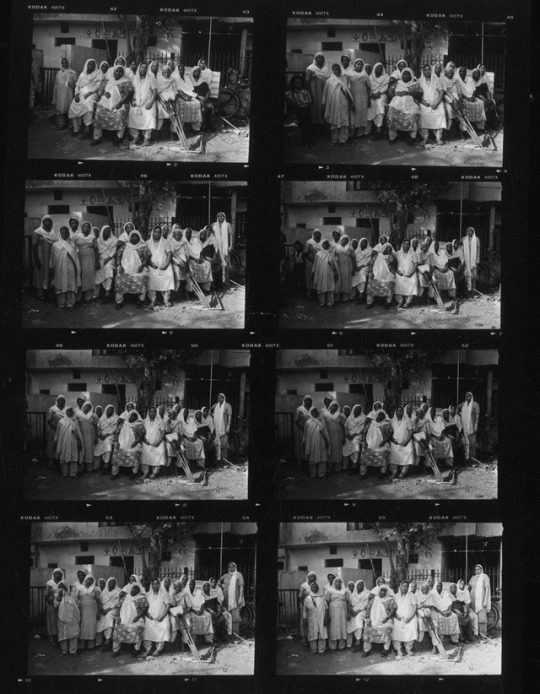
Page 12 of Gauri Gill’s zine 1984, which addresses the 1984 anti-Sikh massacres through a mix of photo-documentation and personal testimonies of those affected. Following the assassination of Indian prime minister Indira Gandhi by her Sikh bodyguards on October 31, 1984 and mounting tension between the Indian government and Sikh separatists (participants in the Khalistan movement), a series of anti-Sikh pogroms would result in the deaths of some 2000-8000 Sikhs in Delhi and Punjab. The Indian government has yet to persecute those responsible in instrumentalizing these grave acts of violence. One such testimony from Gill’s zine reads,
“There is a habit of damaged souls and collective psyches to proscribe an event to a date and time, in order not to deal with the darkness inside. Date and time somehow sets up a false suture, in that we allow ourselves to believe that those two specifics will somehow suffice instead of real justice or giving real voice to what happened. 'Date and Time' may have a cathartic aspect, but it absolves us. You see, without date and time, we are forced to realize that we are still responsible for those who survived; their cause is our own, as are their terrors. Generations died, generations within a family, children lost their parents; entire families were wiped out forever. In civilized nations this is called genocide, crimes against humanity, ethnic cleansing. In India it’s called the 'aftermath of the Sikh riots'. How insidious a term is that, how duplicitous and what further proof does anyone need that we are still a society in denial at best, and a vengeful one at worst.
We will never forget. The victims stand beside us as family gathered under our shelters.
Zarina Muhammed” (Page 79)
29 notes
·
View notes
Photo
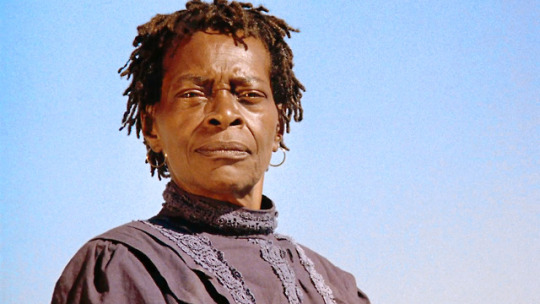
Julie Dash: “[Filmmakers of color] just have to make the films that they want to make. It’s always nice to go pitch a story — that’s part of the growing experience, too… But don’t let anyone ever tell you that there’s no audience. Because that’s a lie… You can’t listen to the curators of culture. They make arbitrary judgments: ‘Oh, there’s no audience. You can’t sell that overseas. It’s too complicated. This is not accessible.’ I was told after Sundance that ‘Daughters of the Dust’ was not a real African-American film… Well, who am I, then? Where did I come from?” [Still from Julie Dash’s Daughters of the Dust, 1991]
55 notes
·
View notes
Photo
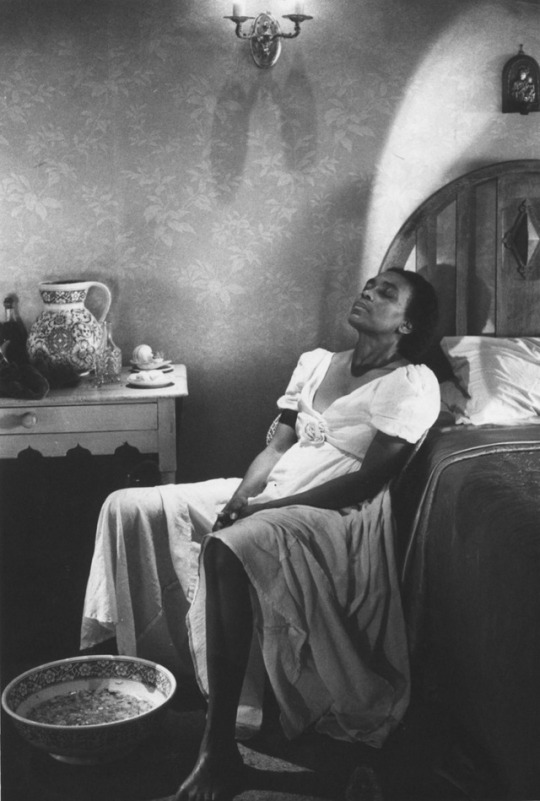
Lorraine O'Grady: “Certainly if [black women’s] subjugated knowledges were to become primary, we would change the world. Imagine what would happen if we were to refuse banishment to the unnameable chaos that defines what woman is not. If we were to claim our stereotypes and make Jezebel the sign of our acceptance of our own bodies, Mammy the symbol of our ability to nurture, and Sapphire the signifier of our resilience and strength. If we could share and build on what we’ve learned about ourselves and the others from an exploitative work world. At the very least we would, as Spillers suggests, write a radically new text for female empowerment.6 But even more dismaying to “them” might be our self-involvement, the discovery that we and not they are the center of our universes. Perhaps it is because many black women novelists have made a strategic choice to describe a world without white people that so few of their works have been translated to film, despite their publishing successes. And perhaps this is also why in the two exceptions, The Color Purple and The Women of Brewster Place, the books have been tamed by directors who are not black women.” [Still from Martina Attille’s Dreaming Rivers, 1988]
254 notes
·
View notes
Photo
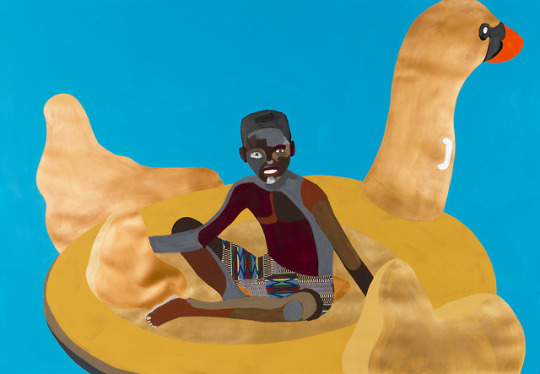
Derrick Adams: "In educational systems, kids learn more about the oppressive structure of Western culture than they learn about the achievements of people of color in opposition to that structure. It would really empower younger generations to know that during times even more critical than these, black people were able to prosper and make a positive impact on the world—that living in oppression is not our only legacy."
265 notes
·
View notes